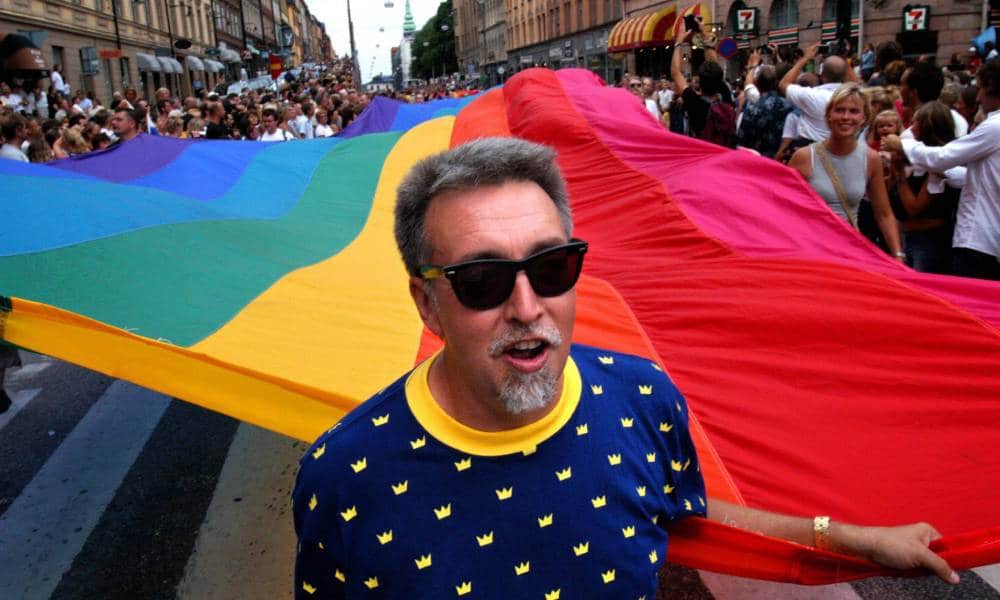Gilbert Baker, who designed the rainbow coloured flag, heads the Stockholm Pride Parade carrying a 250-metre long flag on 2 August 2003. (Photo by FREDRIK PERSSON/AFP via Getty Images)
A long-lost piece of queer history – a remnant of one of the first rainbow Pride flags – has been recovered and is on display in San Francisco.
Artist and queer activist Gilbert Baker created the now ubiquitous LGBT+ Pride symbol in 1978. The original design featured eight stripes – unlike today’s six coloured stripes – and was hand-stitched and dyed. Two giant versions of the flag were displayed at San Francisco’s ‘Gay Freedom Day’ that same year.
These original flags vanished after the celebration and were long considered to be lost forever.
But a section of one of the two early flags has been recovered and is on display at San Francisco’s GLBT Historical Society Museum and Archives to mark the beginning of Pride Month.
In a joint statement to USA Today, Charles Beal, president of the Gilbert Baker Foundation, and Terry Beswick, executive director of the GLBT Historical Society, said there are “few artefacts” for the LGBT+ community that “carry the historic, political and cultural significance of this seminal work of art, the original rainbow flag”.
“We are deeply grateful that Gilbert Baker saved this fragment, and that it has been brought home to San Francisco,” they said. “We trust that its message of diversity, liberation and hope will continue to inspire queer people for generations to come.”
Beal said in further a statement that Baker found the missing flags in June 1979, but they were “stored under a leaky roof” and “badly mildewed”. Beal explained that Baker “managed to salvage a portion” of one of the flags and hid it in secret “for decades”.
Beal said the flag piece was given to Baker’s sister after the activist’s unexpected death in 2017. He recalled that piece of the flag was mailed to the Gilbert Baker Foundation in June 2019. The foundation then carried the fragment – not knowing its significance – during the Stonewall 50 parade, and it was stored in Beal’s Manhattan home afterwards.
It wasn’t until he was contacted by a flag expert that he realised that the fragment was part of one of the original Pride flags. Over the following years, the flag went through a rigorous process in order to verify its authenticity.
The historic LGBT+ artefact was unveiled at the GLBT Historical Society Museum and Archives on 4 June. The fragment will be the centrepiece of an exhibit about Baker’s artwork.
The original flag design included pink and turquoise stripes. But hot pink was dropped in 1979 because it was difficult to find flag fabric in this colour, and Baker removed the turquoise stripe as an even number of stripes was easier to display on street lamps.
As a result, the six-striped LGBT+ Pride flag that is widely known today was born. The flag has been modified over the years to include various groups within the LGBT+ community including trans, intersex and people of colour.
